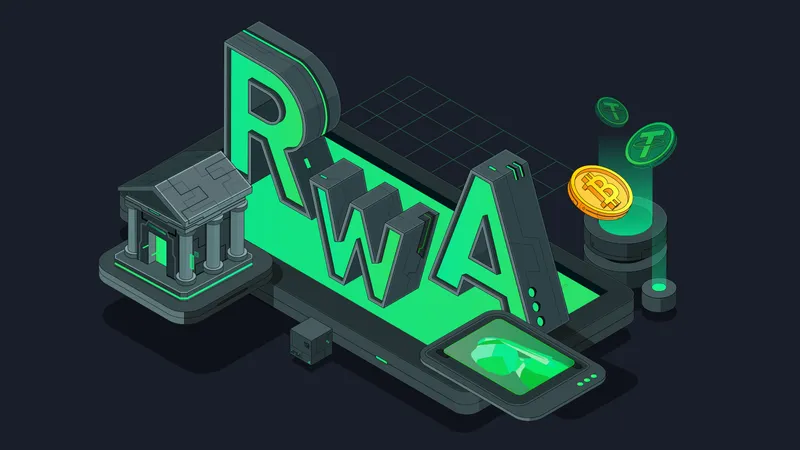The Bridge Between the Real and Digital Worlds
If there’s one trend shaking up the crypto world in 2025, it’s the tokenisation of real-world assets (RWAs). From real estate and government treasuries to private equity, we’re seeing tangible assets being brought on-chain — and it’s changing everything about how investors view crypto.
For years, crypto was considered speculative — dominated by volatile coins and meme tokens. But now, RWAs are grounding blockchain technology in real value. When a luxury apartment in London, a U.S. Treasury bond, or a share in a private company can be represented by a digital token, blockchain stops being just a “tech experiment” and becomes an efficient financial infrastructure.
Why RWAs Matter
Tokenisation means converting ownership rights of physical or traditional financial assets into blockchain-based tokens. These tokens can then be traded, fractionally owned, or used as collateral — all within the DeFi ecosystem.
Imagine this: instead of needing millions to buy into commercial property, you could own a fraction of it — securely tracked on-chain, instantly tradable, and globally accessible. That’s the power of tokenised RWAs.
Institutions are taking note too. BlackRock, Franklin Templeton, and JPMorgan have already moved into RWA tokenisation projects. This influx of traditional finance players gives crypto the legitimacy it’s been missing.
The Benefits Driving Adoption
Liquidity
Tokenised assets can be traded 24/7, unlocking markets that were traditionally illiquid.
Accessibility
Retail investors gain exposure to assets like real estate or private funds that were once exclusive to high-net-worth individuals.
Transparency
Blockchain ensures verifiable ownership records and reduces fraud risk.
Efficiency
Settlement times shrink from days to seconds, cutting out intermediaries.
In short, RWAs are solving real problems while bringing crypto into the mainstream.
The Challenges Ahead
Of course, it’s not all smooth sailing. Regulatory uncertainty remains a big hurdle. Questions about jurisdiction, compliance, and investor protection are still being worked out. Additionally, valuation and custody of tokenised assets need standardized frameworks before we see mass adoption.
Yet, these are growing pains — not roadblocks. The direction is clear: tokenisation is the next frontier for both traditional and decentralized finance.
The Future of RWAs in Crypto
As the crypto market matures, RWAs could form the backbone of a new, hybrid financial system — where blockchain serves as the global settlement layer for all assets.
By 2030, analysts expect trillions of dollars worth of RWAs to be tokenised. And when that happens, crypto won’t just be an alternative market — it’ll be the core infrastructure of global finance.
Final Thoughts
The tokenisation of real-world assets isn’t just a trend — it’s the foundation of a more open, transparent, and inclusive financial future. Whether it’s owning a slice of real estate or investing in tokenised treasury bonds, RWAs are redefining what it means to be part of the crypto ecosystem.
The lines between traditional finance and crypto are blurring — and that’s exactly how innovation happens.

